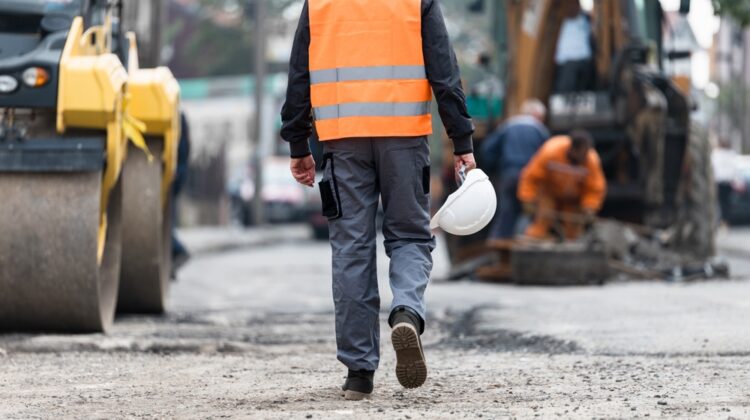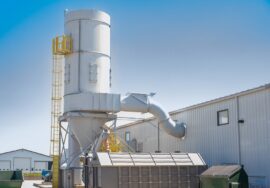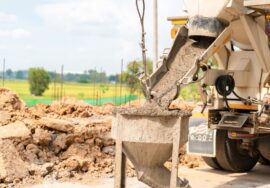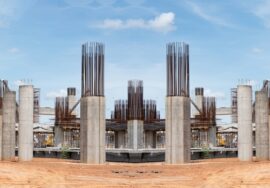
Air Quality Improvement in Construction Sites
Air Quality Improvement in Construction Sites
Construction sites are vital for urban growth but are also major contributors to air pollution. Dust, diesel emissions, and material handling release fine particles and harmful gases that affect both workers and surrounding communities. This is why air quality improvement has become a critical focus in sustainable construction.
Modern builders are now adopting air quality improvement strategies that minimize dust, reduce emissions, and promote healthier, cleaner work environments — ensuring compliance, efficiency, and long-term sustainability.
Why Air Quality Improvement Is Essential
Poor air quality on construction sites can lead to respiratory diseases, reduced productivity, and even legal penalties due to environmental non-compliance. The goal of air quality improvement is to control pollution at its source through modern technologies, eco-friendly materials, and efficient site management.
When implemented effectively, air improvement benefits not just workers but also contributes to community health and overall environmental protection. It aligns closely with green construction practices and global sustainability standards.
Sources of Air Pollution in Construction
Before planning for air improvement, it’s important to understand where pollution comes from. The primary sources include:
-
Dust generation: From excavation, demolition, and material transport
-
Vehicle emissions: Diesel-powered trucks and machinery
-
Material handling: Cement, sand, and concrete release airborne particles
-
Waste burning: Improper disposal of debris emits harmful gases
Addressing these challenges through air quality improvement ensures cleaner air and a safer construction environment.
Key Strategies for Air Quality Improvement
1. Dust Control Measures
Applying water sprays, wind barriers, and dust suppressants during excavation or demolition minimizes airborne particles. These dust control measures are essential for effective air improvement.
2. Use of Low-Emission Equipment
Switching to low-emission construction equipment powered by electricity or biofuel reduces carbon output and harmful gases.
3. Proper Waste Management
Implementing waste management in construction helps prevent burning or improper disposal of debris that leads to air pollution.
4. Sustainable Building Materials
Choosing eco-friendly construction materials such as fly ash concrete, bamboo, and recycled steel reduces toxic emissions during production and use.
5. Green Barriers and Landscaping
Planting trees and shrubs around construction zones acts as natural air filters, supporting air improvement while enhancing site aesthetics.
6. Real-Time Air Monitoring
Installing air quality monitoring systems ensures continuous tracking of particulate matter (PM10, PM2.5) and other pollutants, enabling quick corrective actions.
Air Quality Improvement Regulations in India
In India, construction activities are regulated under several environmental frameworks designed to promote air improvement. The Central Pollution Control Board (CPCB) mandates pollution control measures such as dust suppression, material covering, and on-site monitoring.
Additionally, local pollution control boards enforce guidelines for emission limits and waste disposal to ensure that construction sites comply with India’s National Clean Air Programme (NCAP). These initiatives support India’s goal of achieving cleaner air in major urban areas by 2030.
Benefits of Air Quality Improvement in Construction
Implementing air improvement practices offers multiple benefits:
-
Healthier Workforce: Reduces respiratory and cardiovascular risks for workers.
-
Regulatory Compliance: Meets CPCB and MoEFCC environmental standards.
-
Community Well-being: Lowers pollution levels in surrounding neighborhoods.
-
Energy Efficiency: Clean technologies often consume less energy.
-
Enhanced Reputation: Positions companies as responsible and sustainable developers.
Thus, air quality improvement not only fulfills environmental goals but also drives economic and social value.
Sustainable Technologies for Air Quality Improvement
Modern construction relies on technology to ensure effective air improvement.
Some advanced tools include:
-
Dust filtration systems: Capture fine particles in real time.
-
Electric machinery: Eliminates diesel exhaust emissions.
-
Smart building technology: Tracks energy consumption and pollution levels.
-
Carbon capture materials: Concrete mixes that absorb CO₂ over time.
These innovations make construction sites more sustainable and align with global climate goals.
Partner with AMS India for Cleaner Construction
At AMS India, we prioritize air improvement across all our construction projects. Our team implements advanced dust control systems, sustainable materials, and energy-efficient technologies to minimize pollution and protect the environment.
From pollution control to sustainable construction methods, AMS India delivers reliable and eco-friendly solutions that ensure project success and environmental compliance.
Conclusion
The construction industry has a major role to play in reducing urban air pollution. Through the adoption of air quality improvement strategies such as dust suppression, low-emission equipment, and green materials, builders can significantly lower their environmental footprint.
By combining technology, sustainability, and compliance, construction companies can lead the way toward cleaner, healthier cities. Investing in air quality improvement today ensures a safer and greener tomorrow for everyone.
Read more related articles to enhance your knowledge and make informed decisions
Cost-Effective Modular Construction: Fast, and Sustainable Building Solutions
Smart Modular Buildings: Innovative, Efficient, and Sustainable Construction








